#techtime chronicles
Text

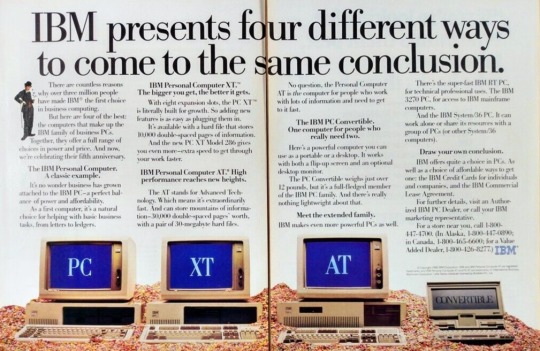


🇺🇸 Step back in time to 1986 and witness the dawn of a revolutionary device—the IBM PC Convertible. As one of the earliest portable computers, the PC Convertible marked a significant milestone in the evolution of American personal computing, offering newfound mobility and versatility to professionals and enthusiasts alike.
💻 The IBM PC Convertible represented IBM's inaugural foray into creating a portable version of its iconic PC line. It was the first laptop-style computer following the luggable IBM Portable, and notably introduced the 3½-inch floppy disk format to the IBM product line. Featuring a clamshell design this groundbreaking device set the stage for future generations of laptops. Its compact form factor and relatively lightweight made it a practical choice for on-the-go computing—a novel concept at the time.
⌨️ Unlike earlier portable computers that required external keyboards, the PC Convertible boasted a built-in keyboard, enhancing its usability and convenience.
👉 The PC Convertible came in three models: PC Convertible, PC Convertible Model 2, and Model 3. The latter two were released in October 1987 and are primarily distinguished by their LCD panels. The original Convertible used a non-backlit panel, which was considered difficult to read. The Model 2 lacked a backlight as well but upgraded to an improved supertwist panel, while the Model 3 included a backlight.
🖥️ Equipped with an innovative flip-up monochrome, CGA-compatible LCD screen, the PC Convertible offered a crisp display for viewing documents and running applications—a revolutionary feature for its time.
💾 Powered by an Intel 80C88 CPU, the PC Convertible came with built-in storage options, including 256 KB of RAM (expandable to 640 KB) and dual 720 KB 3.5-inch floppy drives, enabling users to store and access data with ease. It also featured serial and parallel ports for connecting peripherals.
🔋 Despite its modest battery life by today's standards, the PC Convertible offered respectable uptime, allowing users to work on the go without being tethered to a power source. Weighing just over 12 pounds and featuring a built-in carrying handle, the PC Convertible's battery was rated for 10 hours.
🌟 The IBM PC Convertible was succeeded in 1991 by the PS/2 L40 SX, and in Japan by the IBM Personal System/55note, the predecessor to the ThinkPad. The IBM PC Convertible left an indelible mark on the history of computing, paving the way for the modern laptops we use today. Its innovative design and practical features demonstrated the potential of portable computing, inspiring subsequent advancements in mobile technology.
#old technology#techtime chronicles#companies#tech#technology#old tech#technews#information technology#corporations#electronics#ibm#ibm corporation#ibm pc1#ibm pc#ibm pc convertible#laptops#laptop#computer science#computing#computers#computer#old computers#hardware#software#innovation#made in america#made in usa#floppy disk#thinkpad#ibm pc-line
50 notes
·
View notes
Text






🇯🇵 Embark on a journey through the captivating history of the Sony Aibo robotic companion! Introduced by Sony in 1999, the Aibo revolutionized the concept of robotics, offering users a glimpse into the future of interactive technology.
🤖 The name "Aibo" is derived from the words "Artificial Intelligence" and "Robot," reflecting its innovative design and advanced capabilities. Developed by Sony's robotics division, the Aibo was the world's first consumer-grade entertainment robot, combining cutting-edge AI with lifelike movements and behaviors.
⚙️ The original Aibo models, such as the ERS-110 and ERS-210, featured autonomous navigation, voice recognition, and even the ability to "learn" from interactions with its owners. Despite its initial success, Sony discontinued the Aibo line in 2006 due to financial challenges.
🌟 In 2017, Sony announced the revival of the Aibo project with the launch of the Aibo ERS-1000. It is equipped with a variety of sensors, including touch sensors, capacitive sensors, and a camera system, allowing it to perceive and interact with its environment in new and exciting ways. This modern incarnation of the Aibo retained the charm and personality of the original while introducing new features such as improved AI algorithms, advanced sensors, and cloud connectivity.
💡 Today, the Sony Aibo continues to captivate audiences worldwide, serving as a testament to the enduring appeal of robotics and AI.
#TechTime Chronicles#sony#aibo#sony aibo#y2k#japan#made in japan#sony corporation#old technology#technology#tech#2000s#2000s aesthetic#2000s tech#robots#robot#robotics#AI#artificial intelligence#innovation#electronic#futuristic#old tech#technews#tech news#brands#industry#industrial#entertainment#device
21 notes
·
View notes
Text


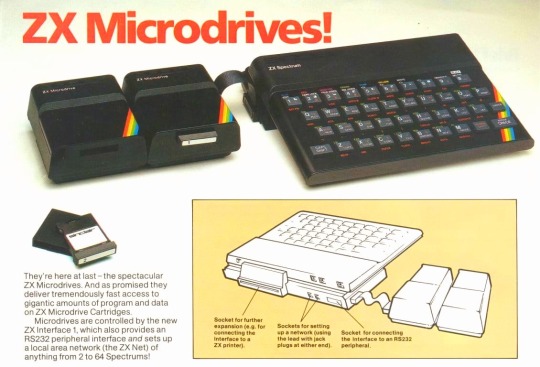
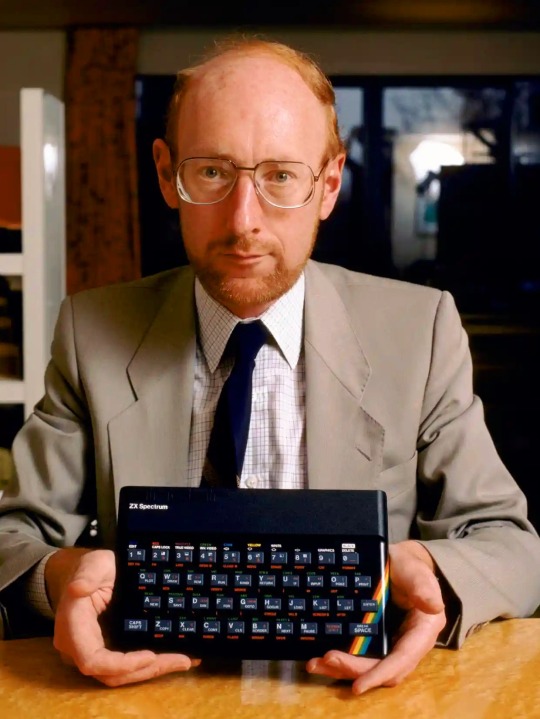


🇬🇧 Immerse yourself in the captivating world of computing through the Sinclair ZX Spectrum—a groundbreaking microcomputer that captured the imagination of an entire generation!
🌟 In 1980, the visionary British entrepreneur and scientist, Sir Clive Sinclair, entered the home computer market with the ZX80 priced at £99.95, marking the era's most affordable personal computer in the United Kingdom. A year later, the ZX81 hit the high street, introducing home computing to a generation, with over 1.5 million units sold.
💻 Released in 1982 by Sinclair Research Ltd., the Sinclair ZX Spectrum swiftly became one of the most iconic home computers of its time. It dominated the UK's computer sales market, fiercely competing against Commodore and Amstrad. This compact and budget-friendly machine brought computing into countless households.
🕹️ Powered by the Zilog Z80A CPU running at 3.5 MHz and equipped with either 16 KB or 48 KB of RAM, the ZX Spectrum sported a sleek, compact design resembling a keyboard with rubber keys, making it innovative and approachable. Its graphics and sound capabilities were ahead of their time, enabling vibrant games and applications.
⌨️ One of the ZX Spectrum's standout features was its vast library of games. From classics like "Manic Miner" and "Jet Set Willy" to innovative titles developed by enthusiasts, the Spectrum's game collection remains a cherished part of gaming history. The computer's BASIC programming language also inspired users to create their own software.
🖥 Despite modest hardware specifications, the ZX Spectrum nurtured a lively community of developers and enthusiasts, serving as a gateway into the world of programming and digital creativity.
🚀 Over its lifespan, the ZX Spectrum evolved with new models, including the ZX Spectrum+, ZX Spectrum 128, and ZX Spectrum +2, each offering enhanced performance and features while retaining the beloved design.
📺 The ZX Spectrum's impact extended beyond its hardware, playing a pivotal role in the British computing scene, inspiring future generations of programmers and entrepreneurs. Its legacy resonates in modern computing and gaming through emulators and remakes that keep its spirit alive.
📊 At the peak of its success and largely inspired by the Japanese Fifth Generation Computer program, the company established the "MetaLab" research centre at Milton Hall near Cambridge to pursue advanced projects like artificial intelligence, wafer-scale integration, and formal verification.
💔 Financial difficulties in 1985, brought on by the failures of the Sinclair QL computer and the TV80 pocket television, led Sinclair to sell the rights to its computer products and brand name to Amstrad in 1986. Sinclair Research Ltd continued as a one-man company, marketing Clive Sinclair's inventions until his passing in September 2021.
#techtime chronicles#old technology#companies#tech#technology#old tech#technews#information technology#corporations#electronics#sinclair research ltd#sinclair#zx spectrum#spectrum#england#british computing#computer legacy#computer science#computing#computers#computer#retro gaming#gaming#video games#innovation#amstrad#metalab#hardware#software#zilog
10 notes
·
View notes
Text
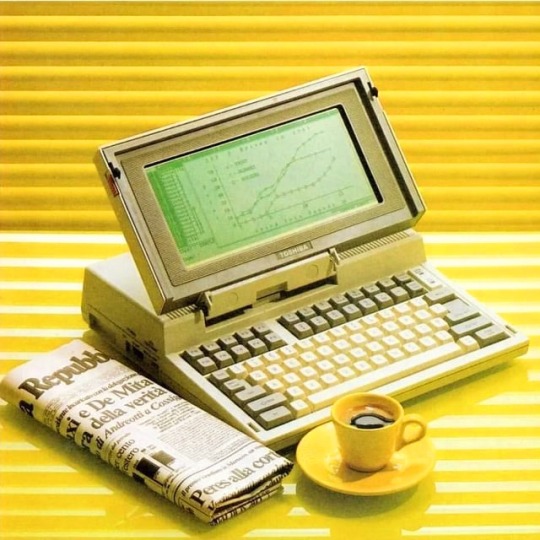




🇯🇵 Unveiling the Toshiba T1100: A Journey into the Dawn of Portable Computing!
💻 In the early 1980s, a revolutionary device emerged, transforming the landscape of personal computing forever. The Toshiba T1100, released in 1985, marked a significant milestone in the history of portable computers. The Toshiba T1100 has subsequently been described by Toshiba as "the world's first mass-market laptop computer".
🌐 The Toshiba T1100 was among the first truly portable computers, designed for professionals and enthusiasts seeking computing power on the go. Weighing approximately 4.1 kilograms (9 pounds) with its lead-acid battery, this innovative machine provided users with unprecedented mobility.
⚙️ Equipped with an Intel 80C88 processor running at 4.77 MHz and boasting 256 KB of RAM, the Toshiba T1100 offered impressive computing capabilities for its time. Its 9.6-inch monochrome LCD screen provided a crisp display, while the detachable keyboard enhanced usability.
💾 The T1100 introduced several innovative features, including a built-in 3.5-inch floppy disk drive—a rarity at the time—which allowed for data storage and transfer with ease. This model also featured MS-DOS as its operating system, providing a familiar computing environment.
📈 The Toshiba T1100 set a new standard for portable computing, demonstrating the feasibility and practicality of laptops for business and personal use. Its success paved the way for subsequent generations of laptops, influencing the evolution of mobile computing worldwide.
👨💻 For professionals in various industries, the Toshiba T1100 represented a game-changer, enabling efficient data management, word processing, and spreadsheet tasks on the move. Its portability and functionality empowered users to work beyond traditional office environments.
🌟 Today, the legacy of the Toshiba T1100 lives on in the sleek, lightweight laptops and notebooks that have become indispensable tools for modern professionals and digital nomads. This groundbreaking device remains a testament to Toshiba's commitment to innovation and excellence in the field of computing. The Toshiba T1100 remains an iconic symbol of the dawn of portable computing—a chapter in the ongoing story of technological progress that continues to shape our digital world.
#old technology#techtime chronicles#companies#tech#technology#old tech#technews#information technology#corporations#electronics#toshiba#t1100#toshiba t1100#laptop#laptops#portable computer#computer science#computing#computers#computer#hardware#software#1980s computers#1980s#innovation#made in japan#japan#retro tech#tech review#pc
14 notes
·
View notes
Text


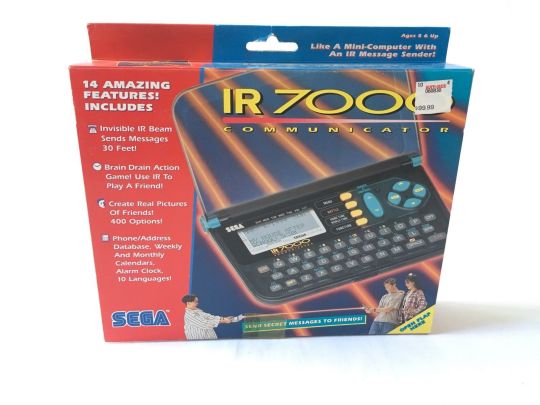
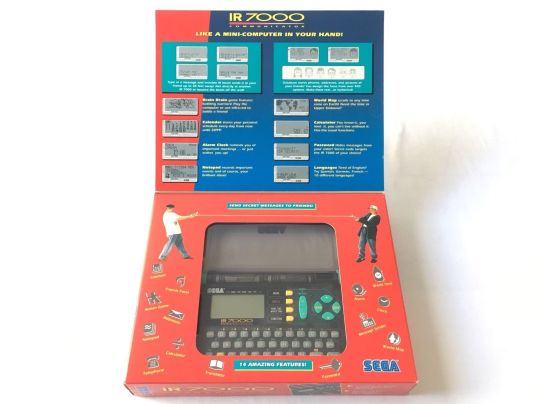
🇯🇵🤝🇺🇲 Step back in time to 1994 and explore the fascinating world of handheld communication with the IR 7000 Communicator—a groundbreaking device jointly crafted by Casio and Sega and released in the United States!
📟 As one of the pioneering handheld gadgets of its time, the IR 7000 served as a personal digital assistant, revolutionizing how users connected and communicated with each other. With its innovative infra-red beam technology, aptly named the "Magic Beam", users could exchange messages and engage in interactive activities like never before.
🎮 Beyond its communication capabilities, the IR 7000 was a versatile companion, offering a plethora of features to cater to various needs. From text messaging to immersive gaming experiences like "Brain Drain", the device provided endless entertainment. Additionally, its ability to create custom contact pictures and safeguard personal information with password protection added a layer of personalization and security.
⚙️ Bearing resemblance to other Casio models like the JD-6000 and JD-6500, the IR 7000 inherited familiar design elements and functionalities. While each model had its unique features, the IR 7000 stood out with its battle mode, setting it apart as a versatile and engaging handheld device.
🌟 Today, the IR 7000 remains a cherished testament to the ingenuity and innovation of its time, paved the way for the handheld communication devices we rely on today.
#old technology#techtime chronicles#companies#old tech#tech#technology#information technology#technews#corporations#electronics#sega#sega corporation#casio#japan#made in japan#handheld communicator#communicator#brain drain#gadgets#device#electronic#digital assistant#pda#innovation#industry#usa#communication#messanger#magic beam#infra-red beam
19 notes
·
View notes
Text
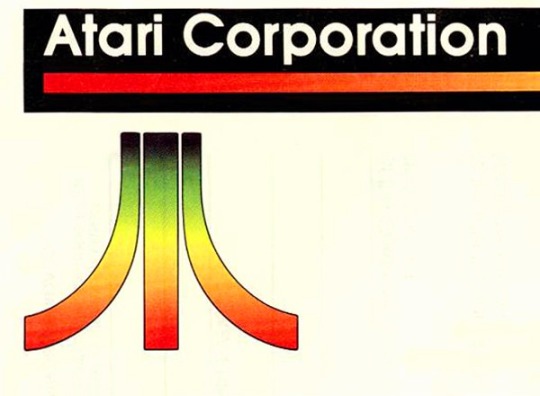






🇺🇲 Dive into the realm of computing nostalgia with a look back at the Atari Corporation's iconic personal computers—the Atari 400/800, Atari 520ST, and Atari Falcon! Introduced by Atari Corporation, a pioneer in the world of gaming and computing, these machines left an indelible mark on the landscape of home computing during their respective eras.
⌨️ The Atari 400 and Atari 800 made their debut in 1979, offering users a glimpse into the future of personal computing. With their sleek design and innovative features, including custom graphics and sound capabilities, these machines quickly gained a dedicated following among early computer enthusiasts.
🚀 Fast forward to 1985, and Atari unleashed the Atari 520ST—a groundbreaking computer that revolutionized the industry with its impressive performance and affordability. Boasting a powerful Motorola 68000 processor and advanced graphical capabilities, the 520ST became a favorite among musicians, artists, and gamers alike, earning a reputation as a versatile and reliable machine.
💻 In 1992, Atari continued its legacy of innovation with the introduction of the Atari Falcon—a high-performance computer designed for the next generation of computing enthusiasts. Featuring a Motorola 68030 processor, enhanced graphics and multimedia capabilities, and built-in MIDI support, the Falcon pushed the boundaries of what was possible in home computing at the time.
💾 The Atari 400/800 series was known for its distinctive membrane keyboard and cartridge-based software, while the Atari 520ST gained popularity for its compatibility with industry-standard software and peripherals, earning it a place in the hearts of musicians and creative professionals.
🕹️ Although the Atari Corporation's foray into personal computing was relatively short-lived, the legacy of the Atari 400/800, Atari 520ST, and Atari Falcon lives on in the annals of computing history, inspiring generations of technology enthusiasts and paving the way for future innovations.
#techtime chronicles#old computers#atari#atari corporation#companies#computing#computers#computer#computer stuff#innovation#industry#usa#made in usa#atari 400#atari 800#atari vcs#atari falcon#atari 520ST#computer science#computer accessories#basic#keyboard#hardware#software#motorola#processor#multimedia#graphic#old technology#old tech
11 notes
·
View notes
Text
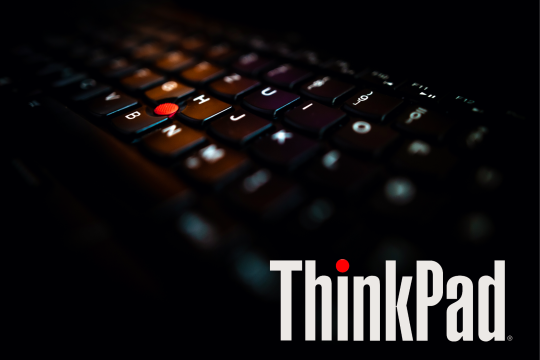

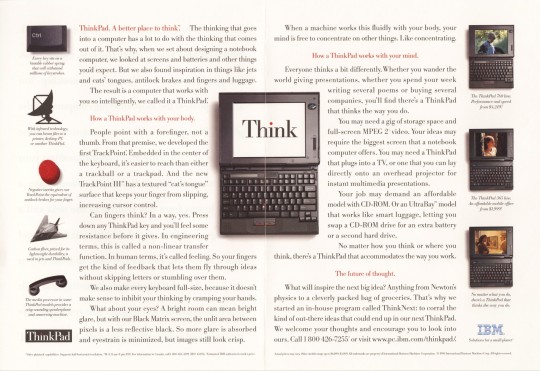

🇺🇲 Explore the fascinating journey of the iconic ThinkPad! Originally introduced by IBM in 1992, the ThinkPad quickly became synonymous with innovation, reliability, and cutting-edge technology.
💼 Designed for professionals on the go, the ThinkPad's signature black design, red TrackPoint, and durable build set it apart from the competition. ThinkPad was initially developed by a team led by Arimasa Naitoh, who drew inspiration from the traditional Japanese bento box for its design.
💻 Over the years, the ThinkPad underwent several transformations, adapting to the ever-changing landscape of technology. From the classic clamshell design to convertible tablets and ultrabooks, each iteration pushed the boundaries of what a laptop could achieve. The butterfly keyboard introduced on the ThinkPad 701C in 1995 was named one of the "25 Greatest PCs of All Time" by PC World.
🚀 Since the early 2000s, ThinkPads have been a trusted companion for astronauts aboard the International Space Station (ISS). ThinkPads have been instrumental in assisting astronauts with various tasks onboard the ISS, including data analysis, communication with mission control, and conducting scientific experiments.
💾 Despite changing hands from IBM to Lenovo in 2005, the ThinkPad's commitment to quality and innovation remained unwavering. Under Lenovo's stewardship, it continued to thrive, evolving with the times while staying true to its heritage.The iconic red TrackPoint remains a staple feature across generations, beloved by users for its precision and ease of use.
🌟 Today, the ThinkPad remains a symbol of excellence in the world of computing, beloved by professionals and enthusiasts alike for its reliability, performance, and timeless design. From business executives to tech enthusiasts, it became the go-to choice for anyone seeking performance and versatility.
#TechTime Chronicles#gadgets#history#laptops#1990#2000s web#old technology#ibm#ibm pc#lenovo#thinkpad#space#space station#TrackPoint#made in usa#usa#made in china#china#brands#companies#2000s tech#technology#old tech#retro tech#technews#tech#innovation#innovative#y2k#electronic
12 notes
·
View notes
Text
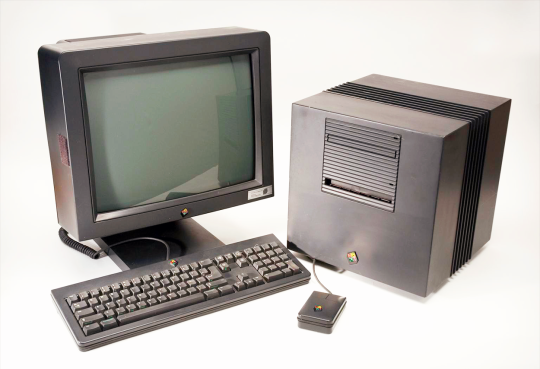


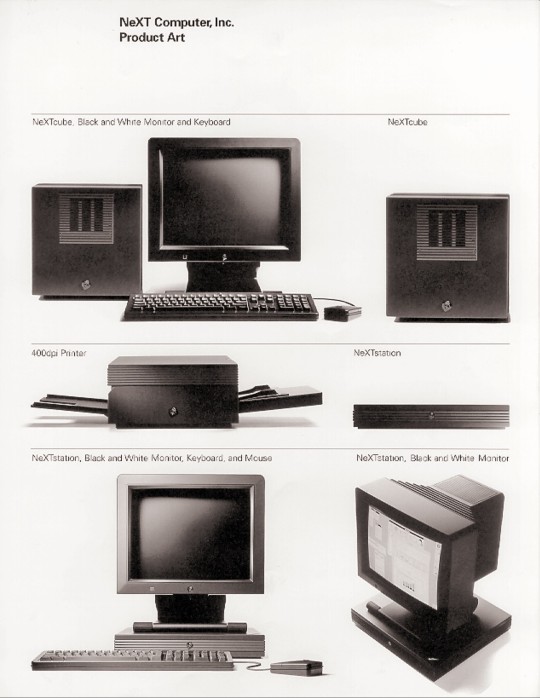

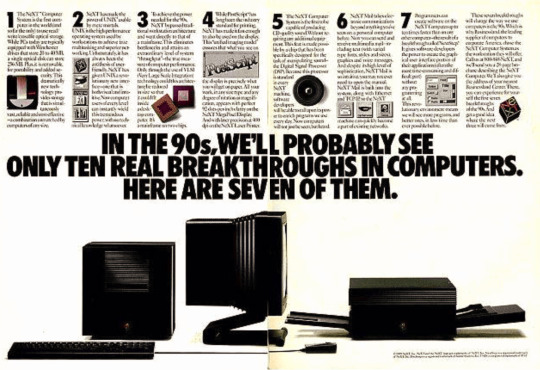
🇺🇲 Explore the remarkable story of NeXT Computer and its profound influence on the evolution of computing! Founded by Steve Jobs in 1985 following his departure from Apple, NeXT embarked on a mission to redefine personal computing with its pioneering approach and state-of-the-art technology.
💻 Introduced in 1988, the NeXT Computer was celebrated as a revolutionary workstation that pushed the boundaries of hardware and software integration. With its sleek black design and unparalleled performance, it offered users a glimpse into the future of computing.
💡 At its core, the NeXT Computer ran on the NeXTSTEP operating system, a Unix-based platform renowned for its advanced features and developer-friendly environment. Utilizing an object-oriented programming model and intuitive user interface, NeXTSTEP paved the way for modern operating systems, laying the groundwork for macOS and iOS.
🔍 Notable figures such as Tim Berners-Lee, the inventor of the World Wide Web, relied on NeXT workstations to develop the first web browser and web server, underscoring the platform's impact on shaping the internet as we know it today.
📉 Despite initial commercial challenges, the NeXT Computer's legacy endured through its profound influence on the technology industry. In 1997, Apple acquired NeXT, marking Steve Jobs' return to the company he co-founded and setting the stage for Apple's resurgence as a global leader in technology.
🌟 The NeXT Computer remains a testament to innovation and foresight, demonstrating the transformative power of technology to shape the world.
#TechTime Chronicles#electronics#electronic#gadgets#old computers#NeXT#NeXT Computer#Steve Jobs Legacy#Steve Jobs#companies#apple#apple computers#computing#computers#computer#workstation#old technology#information technology#tech#technology#technews#old tech#old internet#old web#macOS#ios#NeXTSTEP#world wide web#1980s computers#made in america
17 notes
·
View notes
Text





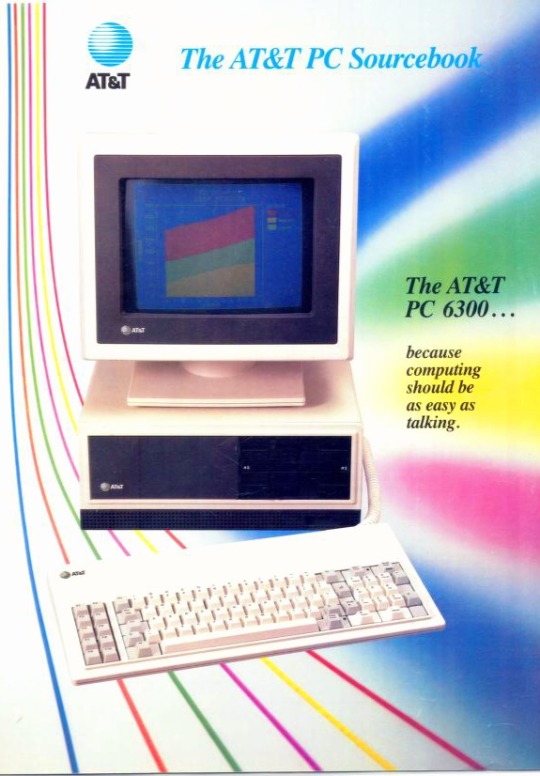

🇺🇲 Delve into the fascinating history of AT&T Information Systems, a subsidiary of American Telephone & Telegraph Company (AT&T Corporation) that played an important role in the computer technology landscape. Established as one of the core units of AT&T following the breakup of the Bell System, AT&T Information Systems focused on computer technology ventures, telephone sales, and other unregulated business endeavors.
📊 As a strategic move to compete with industry giant IBM, AT&T Information Systems collaborated with Olivetti, leveraging their production capabilities to manufacture the AT&T PC 6300 series of computers. This series, alongside the 3B series computers and the AT&T UNIX PC, represented a multi-faceted approach to challenging IBM's dominance in the computer market.
💻 The AT&T PC 6300 series showcased AT&T Information Systems' commitment to innovation and technological advancement. By harnessing the power of collaboration and strategic partnerships, AT&T Information Systems sought to carve out a niche in the competitive computer industry landscape.
#TechTime Chronicles#electronic#electronics#tech#technology#old technology#at&t#ibm#ibm pc#unix#unix pc#computer#computers#computing#companies#corporations#business#industry#information technology#information systems#1980s computers#1980s#1980s commercials#telecomindustry#telecominnovation#operation system#made in usa#telecomunications#innovation#usa
10 notes
·
View notes
Text




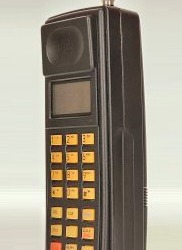

🇰🇷 Step back in time to the mid-1980s when Samsung embarked on its journey into the world of mobile phones with the creation of the Samsung SC-1000—a pioneering device designed for in-car use. While this marked Samsung's inaugural foray into the realm of mobile communication, the SC-1000 faced challenges due to quality issues, hindering its success.
📱 Undeterred by setbacks, Samsung's dedication to innovation led to a pivotal moment in 1988 with the launch of the Samsung SH-100—the company's first handheld mobile phone. Born out of two years of intensive research and development, the SH-100 not only marked Samsung's entry into the handheld mobile phone market but also represented South Korea's first venture into mobile phone manufacturing.
⚜️ Released just in time for the 1988 Summer Olympics, the Samsung SH-100 debuted on the domestic market, setting the stage for Samsung's future endeavors in the mobile industry. By comparison, Nokia, a prominent player in the market, had only introduced three cell phone models by that time.
📈 Despite modest initial sales of only 1000 to 2000 units, the Samsung SH-100 laid the foundation for Samsung's continued growth and innovation in the mobile phone sector. Undeterred by early challenges, Samsung remained committed to advancing its cell phone technology, releasing new and improved models year after year.
🌐 The journey of Samsung's mobile phone evolution serves as a testament to the company's resilience, determination, and unwavering pursuit of excellence in the ever-evolving landscape of telecommunications. From humble beginnings to global prominence, Samsung's legacy in the mobile industry continues to shape the way we communicate and connect with the world.
#techtime chronicles#old technology#tech#technology#companies#old tech#information technology#technews#corporations#electronics#samsung#samsung electronics#south korea#made in south korea#sc-1000#sh-100#mobile phones#cell phone#telecommunications#telecomindustry#innovative#innovation#industry#cellular#phones#phone#communication#brands#technogeek#techno geeks
8 notes
·
View notes
Text

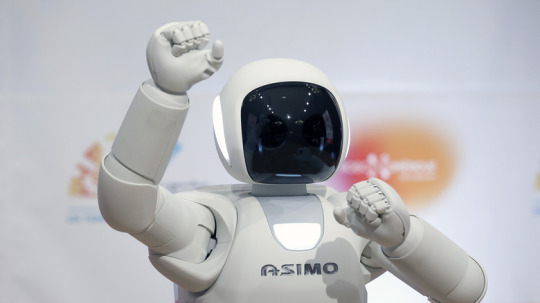


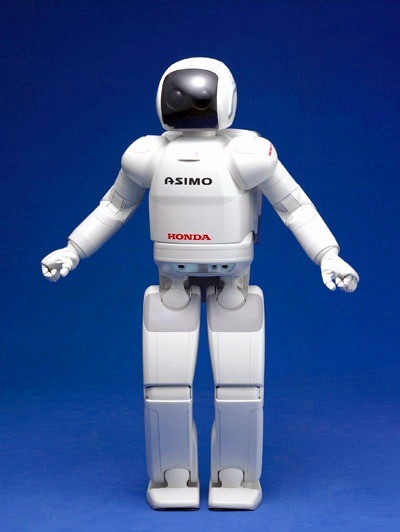

🇯🇵 Step into the world of robotics with ASIMO—a groundbreaking humanoid robot that captivated audiences with its innovative design and advanced capabilities! Developed by Honda, ASIMO represents the pinnacle of humanoid robotics, showcasing cutting-edge technology and engineering ingenuity.
🤖 ASIMO made its debut in 2000 as the culmination of decades of research and development in robotics. Standing for Advanced Step in Innovative Mobility, ASIMO was designed to push the boundaries of what was possible in robotics and artificial intelligence. With its humanoid appearance and lifelike movements, ASIMO captured the imagination of people around the world.
⚙️ Beneath its sleek exterior, ASIMO boasted a sophisticated array of sensors, motors, and actuators that allowed it to walk, run, climb stairs, and interact with its environment in a remarkably lifelike manner. Equipped with advanced AI algorithms, ASIMO could recognize faces, voices, and gestures, enabling it to respond intelligently to human interactions.
🔍 ASIMO was not only a technological marvel but also a cultural icon, appearing in numerous public demonstrations, events, and media appearances. Its friendly demeanor and impressive capabilities made it a beloved ambassador for robotics and innovation.
💡 Despite its groundbreaking advancements, production of ASIMO was discontinued in 2018. One of the main reasons for this decision was Honda's shift in focus towards other areas of research and development, such as mobility solutions and electric vehicles. Additionally, the rapidly evolving field of robotics presented new opportunities and challenges that influenced Honda's strategic priorities.
🌟 Nonetheless, ASIMO remains a symbol of technological innovation and human ingenuity, inspiring future generations of roboticists and engineers to push the boundaries of what is possible. Its legacy lives on as a testament to the power of technology to shape the future of humanity.
#techtime chronicles#tech#technology#companies#electronics#information technology#technews#corporations#honda#asimo#robotics#robot#robots#robotization#made in japan#japan#innovation#innovators#innovative#technoblade#old technology#technically#old tech#tech news#retro tech#2000s aesthetic#2000s tech#2000s#y2k#y2k core
8 notes
·
View notes
Text
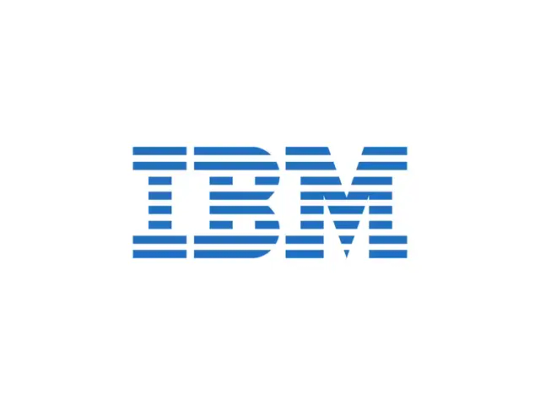
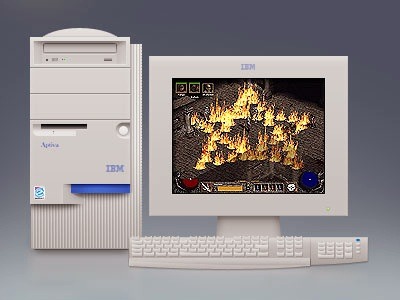

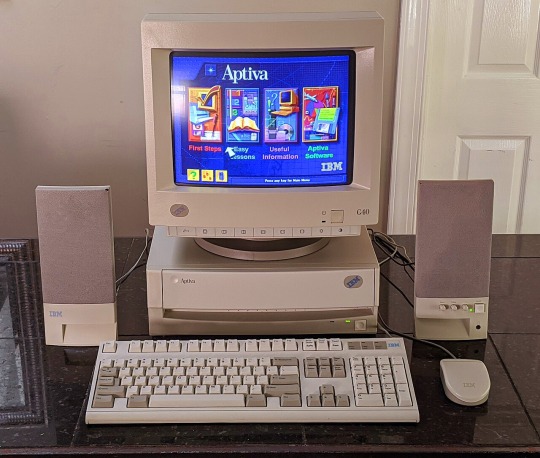
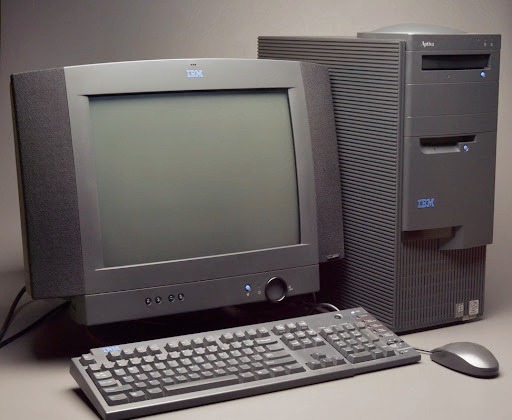




🇺🇲 Embark on a nostalgic journey through the fascinating history of the IBM Aptiva. Introduced by IBM, a global leader in technology innovation, the Aptiva series represented a bold leap forward in home computing, combining cutting-edge technology with user-friendly design.
💻 The IBM Aptiva made its debut in September, 1994, as the replacement for the IBM PS/1. With its sleek and stylish design, intuitive user interface, and powerful performance, the Aptiva quickly became a favorite among home users.
⌨️ Rooted in IBM's legacy of innovation, the Aptiva series showcased the latest advancements in hardware and software technology. The first Aptiva models were based on the Intel 80486 CPU. Later models used the Pentium and AMD CPUs. First-generation models came with DOS 6.3 and Windows 3.1. Pentium-generation Aptivas came with Windows 95 and OS/2 'select-a-system' (PC DOS 7/Windows 3.1 and OS/2 Warp) on selected models. Most models included a modem and a standby/hibernation feature called "Rapid Resume".
🌟 The IBM Aptiva was known for its innovative features, including built-in CD-ROM drives, sound cards, and modems, which were cutting-edge technologies at the time. Its user-friendly design and robust performance made it a popular choice for both work and play. From its state-of-the-art processors and expansive memory options to its vibrant graphics and immersive multimedia capabilities, each iteration of the Aptiva pushed the boundaries of what was possible in home computing.
⚙️ Over the years, the IBM Aptiva evolved to meet the changing needs of consumers, adapting to the rapid pace of technological innovation. From compact desktop models to sleek all-in-one designs, the Aptiva series offered a diverse range of options to suit every lifestyle and budget.
💔 The last Aptiva system was withdrawn from sale in May 2001 without a direct replacement when IBM decided to exit the home market. Customers were directed to the IBM NetVista, which was more targeted to business desktops.
#techtime chronicles#old technology#tech#technology#companies#old tech#information technology#technews#corporations#electronics#ibm#ibm pc#ibm aptiva#ibm pc1#1994#1990s computers#cd rom#old computers#computers#computer#computer stuff#computing#computer science#computer accessories#home computer#personal computer#ms dos#windows 95#os2#os/2
7 notes
·
View notes
Text

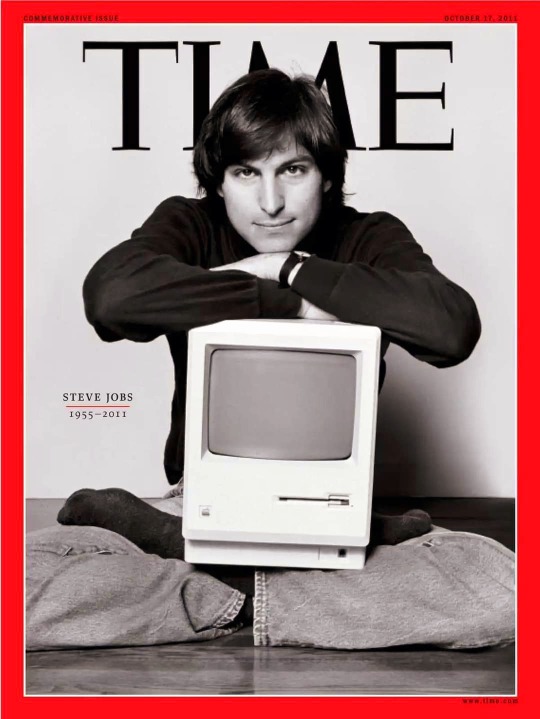

🇺🇲 Dive into the visionary world of Steve Jobs—a trailblazing entrepreneur whose ingenuity and creativity revolutionized the technology industry! Steve Jobs was a visionary leader known for his relentless pursuit of innovation and perfection. And tooday is his birthday!
🍏 Steve Jobs' journey began in a garage in Cupertino, California, where he and Steve Wozniak founded Apple Computer in 1976. From humble beginnings, they set out to change the world with his vision of bringing cutting-edge technology to the masses. With the introduction of the Apple I and later the Apple II, they laid the foundation for what would become one of the most influential companies in history.
💻 Throughout his career, Jobs was known for his uncompromising commitment to design and user experience. Jobs' creations were characterized by their sleek aesthetics, intuitive interfaces, and seamless integration of hardware and software. From Apple to NeXT his attention to detail and obsession with perfection set his products apart as a leaders in innovation and design.
🌟 Despite facing setbacks and challenges along the way, Jobs' relentless drive and visionary leadership propelled Apple to unprecedented success. His legacy lives on as a guiding light for entrepreneurs and innovators around the world, inspiring them to think differently and challenge the status quo.
#techtime chronicles#tech#technology#companies#old technology#information technology#old tech#technews#apple computers#apple#apple music#steve jobs#jobs#NeXT#old computers#computing#computers#computer#computer stuff#macintosh#macos#macos x#ios#iphone#ipad#next computer#itunes#cupertino#california#steve wozniak
7 notes
·
View notes
Text



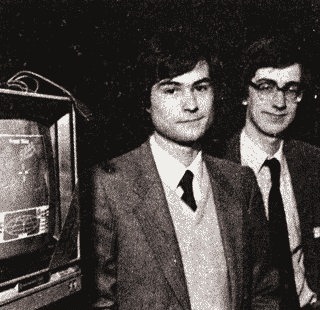
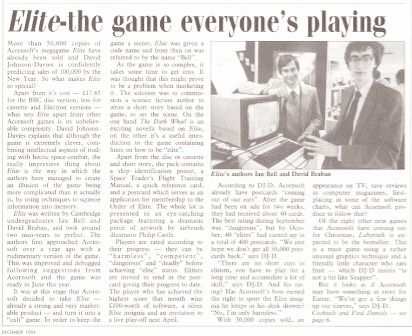


🇬🇧 Elite is a groundbreaking space trading and combat video game that emerged in the mid-1980s, captivating gamers with its expansive universe and innovative gameplay. Developed by David Braben and Ian Bell, Elite was first released in 1984 for the BBC Micro and Acorn Electron computers, later expanding to other platforms.
🚀 Elite was revolutionary for its time, offering players an open-ended experience set in a vast, procedurally generated galaxy. The game allowed players to pilot a spaceship through various star systems, engaging in trade, combat, and exploration. Elite's development was driven by its ambitious scope and technical achievements, leveraging procedural generation to create a seemingly infinite universe within the constraints of early computer hardware.
🌌 In Elite, players assume the role of a spaceship pilot navigating through a complex network of star systems, each with its own planets, space stations, and resources. The game featured realistic physics for space travel and combat, adding to its immersive appeal. Players could trade goods between star systems, mine asteroids for resources, and engage in dogfights with pirates or law enforcement.
🛰️ As players accumulated wealth and experience, they could upgrade their ships with better weapons, shields, and cargo holds. Elite introduced a reputation system that influenced how NPCs interacted with the player, offering a sense of depth and consequence to the gameplay.
🎮 Elite's success paved the way for the space simulation genre, inspiring a generation of game developers and spawning sequels and spiritual successors. The game's combination of exploration, combat, and trading became a hallmark of the genre, influencing titles like Wing Commander, Freelancer, and EVE Online.
🌠 In recent years, Elite Dangerous, a modern incarnation of the series developed by Frontier Developments, has garnered acclaim for its expansive gameplay and realistic depiction of space exploration. Elite Dangerous builds upon the foundation laid by the original Elite, offering players an even more immersive experience in a procedurally generated galaxy.
🌟 Elite remains a landmark in video game history, celebrated for its ambition, innovation, and enduring influence on the space simulation genre. For gamers looking to explore the vast reaches of space and engage in thrilling adventures, Elite remains a timeless classic worth experiencing. Fly safe, Commander!
#old technology#techtime chronicles#companies#tech#technology#old tech#technews#information technology#corporations#electronics#elite#video games#zx spectrum#sinclair#retro gaming#gaming#computing#old computers#computer science#computers#elite dangerous#acorn electron#bbc micro#legacy gameplay#expansive universe#1980s computers#software#software development#programming#hardware
5 notes
·
View notes
Text
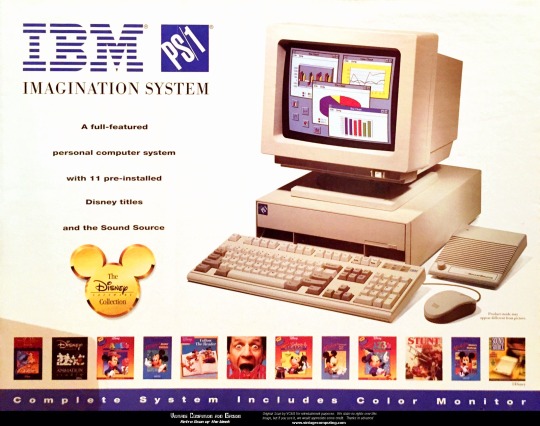


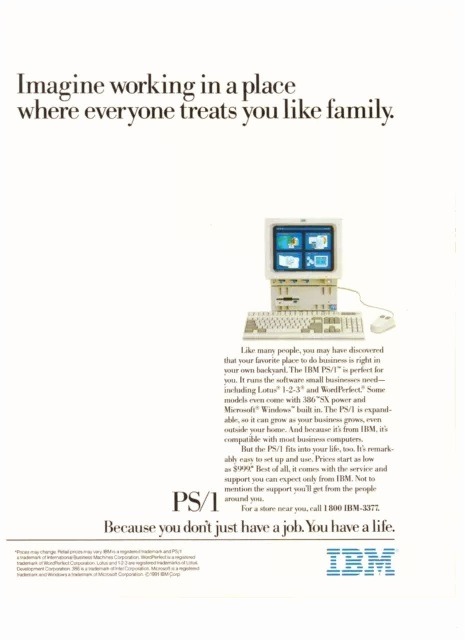
🇺🇲 Step back in time and explore the fascinating journey of the IBM PS/1—a pioneering computer that revolutionized personal computing in the late 1980s and early 1990s!
💻 The IBM PS/1, short for Personal System/1, marked a significant milestone in the evolution of home computing. Launched by IBM in 1990, this innovative machine was designed to bring the power and versatility of IBM's business computers into the homes of consumers.
💾 With its sleek and compact design, the IBM PS/1 was a departure from the bulky and intimidating computers of the past. It featured a built-in monitor, keyboard, and mouse, making it a convenient all-in-one solution for home users.
⚙️ Under the hood, the IBM PS/1 boasted impressive specifications for its time, including an Intel 80286 or 80386 processor, up to 16MB of RAM, and a variety of storage options ranging from floppy disks to hard drives. This formidable hardware allowed users to run productivity software, play games, and explore the emerging world of multimedia with ease.
💡 One of the most notable features of the IBM PS/1 was its user-friendly interface, which made it accessible to users of all skill levels. With its intuitive graphical user interface and pre-installed software, including IBM's own software suite and educational programs, the IBM PS/1 opened up new possibilities for home computing.
📈 Despite facing stiff competition from other manufacturers, the IBM PS/1 enjoyed moderate success and helped pave the way for the widespread adoption of personal computers in homes around the world. Its influence can still be felt today in the countless households that rely on computers for work, entertainment, and communication.
🚀 The IBM PS/1 may have been a product of its time, but its legacy lives on as a testament to the transformative power of technology. As we continue to push the boundaries of computing, let us not forget the humble beginnings of the IBM PS/1 and the role it played in shaping the digital world we know today.
#old technology#techtime chronicles#companies#tech#technology#old tech#technews#information technology#corporations#electronics#ibm pc1#ibm pc#ibm#ibm corporation#computer science#computing#computers#made in america#made in usa#intel 80286#intel#intel 80386#hardware#software#software development#computer#floppy disk#innovation#information#user interface
5 notes
·
View notes
Text




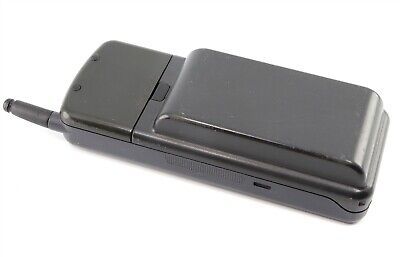

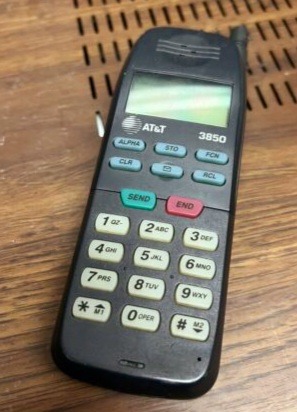
🇺🇸 Step back in time and delve into the fascinating history of AT&T's journey in the development and production of mobile phones! The AT&T Corporation (an abbreviation of its former name, the American Telephone and Telegraph Company) was a successor of the original Bell Telephone Company founded by the legendary inventor of the first practical telephone - Alexander Graham Bell in 1877.
👉 AT&T's division - Bell Laboratories, was created in 1925 from the consolidation of the R&D organizations of Western Electric and AT&T. Bell Labs made significant scientific advances, including the transistor, the laser, the solar cell, the digital signal processor chip, the Unix operating system, and the cellular concept of mobile telephone service.
🔍 AT&T's foray into the realm of mobile phones dates back to the early days of telecommunications. In the late 1940s, it embarked on pioneering efforts to develop mobile phone technology, laying the groundwork for future advancements in wireless communication.
💡 In the early years, AT&T, a huge telecommunications giant, focused on developing analog mobile phone systems, laying the groundwork for the future of wireless communication. Their first systems were limited to car phones, which required roughly 30 pounds of equipment in the trunk. These early devices were bulky and limited in functionality, but they represented a groundbreaking leap forward in telecommunications.
🏁 The first cellular phone was the culmination of efforts begun at AT&T Bell Labs and continued by Motorola Inc. While Motorola was developing the cellular phone itself, AT&T Bell Labs worked on the cellular system called AMPS. On April 3, 1973, Martin Cooper placed the first public call from a Motorola handheld portable cell phone to his counterpart Dr. Joel S. Engel at AT&T Bell Labs.
🏙 Advanced Mobile Phone System (AMPS) was an analog mobile phone system standard originally developed by AT&T Bell Labs and later modified in a cooperative effort with Motorola Inc. It was officially introduced in the USA on October 13, 1983. On this day, Bob Barnett, former president of Ameritech Mobile Communications, placed a call with a cell phone to the grandson of Alexander Graham Bell, who was in Germany for the event.
➡️ During the 1980s to 1990s, AT&T Corporation tried to achieve its place in the cell phone market and introduced some interesting devices: 3810, 3850, and 6650. Featuring sleek and ergonomic designs, they were a real testament to innovation and engineering excellence.
⚙️ Equipped with advanced features for its time, these phones boasted impressive functionality, including voice calling, text messaging, and address book capabilities. Their cutting-edge technology represented a leap forward in mobile communication, setting new standards for performance and reliability. These phones also ran on the AMPS 800 cell system.
📑 In 1996, AT&T spun off Bell Laboratories, along with most of its equipment manufacturing business, into a new company named Lucent Technologies. AT&T retained a small number of researchers who made up the staff of the newly created AT&T Labs. That meant the decline of future attempts at cell phone manufacturing by AT&T Corporation.
🌐 Today, AT&T continues to be a powerful multinational telecommunications holding company, offering a diverse range of cutting-edge services to consumers worldwide. With a rich legacy of innovation and a steadfast commitment to excellence, AT&T remains a leader in the ever-evolving landscape of telecommunications.
#old technology#techtime chronicles#companies#old tech#tech#technology#information technology#technews#corporations#electronics#at&t#bell labs#lucent#mobile phones#motorola inc#bell telephone company#american telephone and telegraph company#at&t corporation#cell phone#cell system#amps 800#alexander graham bell#car phone#telecomindustry#telephone#telecommunications#innovators#innovative#innovation#industry
4 notes
·
View notes